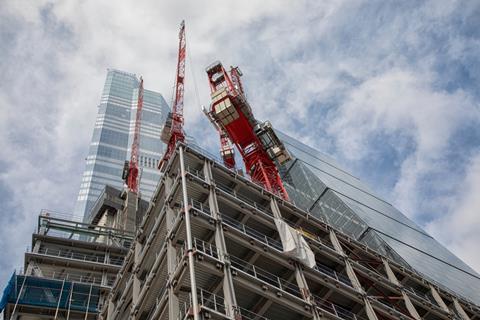Shock and delight as end of the road looms for controversial scheme following Gove’s decision to kick it into touch
Lawyers for the Tulip were locked in talks this afternoon about what to do next after the 305m-tall tourist attraction in the City of London was thrown out by the government earlier today.
Project insiders told �ڶ����� they were taken aback by the news with one saying: “A few weeks ago I thought it was 80:20 in favour of going through. I’m gobsmacked. I wonder if COP26 had something to do with it.”
The final decision on the Foster + Partners-designed scheme rested with housing and communities secretary Michael Gove after a planning battle that lasted more than two years. The City of London approved it in April 2019 only for it to be turned down by London mayor Sadiq Khan a few months later.

After Khan’s refusal, developer Bury Street Properties, which is run by Brazilian billionaire banker Joseph Safra, launched an appeal with the planning inquiry held towards the end of last year.
Gove took over responsibility for the decision after previous incumbent Robert Jenrick was sacked in the autumn reshuffle.
In the 210-page report refusing it permission, Gove said there were “too many compromises to amount to world-class architecture” and also questioned the “highly unsustainable concept of using vast quantities of reinforced concrete”.
The news split the industry with the Square Mile’s former chief planner Peter Rees telling �ڶ�����: “Thank God. I’m delighted. I would have recommended it for refusal.
“There is little enough land [in the City] as it is without wasting it on someone’s ego trip. The City is not an amusement park.”
He added: “I’m quite amazed he’s [Gove] done something sensible.”
Rees suggested alternative locations for the Tulip could be Croydon or Canary Wharf, “where they could do with it”.
And Karen Cook, the PLP architect behind the City’s current tallest tower, 22 Bishopsgate, said: “The building needs to be more than a luxury bar in the sky.”
She raised concerns about the Tulip’s impact on the public realm, with City of London officials responsible for public space previously saying in early 2019 they could not support the proposals because the ground-level access for the attraction was not good enough to handle a huge influx of visitors.
Cook added: “If it [the Tulip] had other uses, I think it would have stood more of a chance.”
Last year’s planning inquiry heard that visiting school and community groups would have had free access to the educational space, located on the lowest floor of the educational area, but would not have access to several key features as paying visitors, including the glass slides and rotating gondolas fixed to the outside of the building.
Others told �ڶ����� they were disappointed by the decision, with James Goldsmith, the head of leasing at AXA, one of the funders behind 22 Bishopsgate, saying: “I think it would have added to the variety of the City.”
And New London Architecture founder Peter Murray said: “I think it’s a great shame. The City needs to attract a different demographic. At the moment it is suffering from Tuesday, Wednesday and Thursday working.
“If the amenities of the Square Mile are to survive – shops, restaurants, pubs and so on – they need a seven-days-a-week customer base. Three days isn’t going to cut it. If the amenities of the City disappear, so will the financial services.”
Gove’s decision included concerns about different protected views, the design of the tower and its use of carbon and concluded that the harm caused on these fronts would not be outweighed by the “economic, tourism and educational benefits”.
One key finding was that the “extensive measures that would be taken to minimise carbon emissions during construction would not outweigh the highly unsustainable concept of using vast quantities of reinforced concrete for the foundations and lift shaft”.
Another issue was the impact the Tulip would have on the setting of the Tower of London World Heritage Site.
Both Khan and Historic England had objected in part because of concerns on the skyline and protected views with a spokesperson for the mayor adding: “The mayor is delighted that [Gove] has dismissed this appeal outright.
“He has long argued that the proposed tower would be little more than a concrete lift shaft with a viewing gallery at the top, offering very little in terms of benefits for Londoners, with no new office space or housing.”
The scheme had been planned for a site next door to Fosters’ Gherkin with contractors (see box below) already in talks about who would build it.
Counting the cost: London’s next high-profile job goes up in smoke
Four firms had been eyeing the job which had a construction price tag of £500m.
As well as Skanska, which was acting as construction consultant, Mace, Multiplex and Sir Robert McAlpine had all been talking to the scheme’s developer Bury Street Properties, the company headed by Brazilian billionaire and banker Joseph Safra which also owns the Gherkin.

It would have been the most high-profile high-rise in the City since Multiplex completed 22 Bishopsgate last year.
If it had got the green light, the formal tender process was expected to have started before Christmas with bid documents set to have been back next spring.
A winner was due to have been appointed next summer for a start on site next autumn. Work had been expected to last for around five years.



























2 Readers' comments